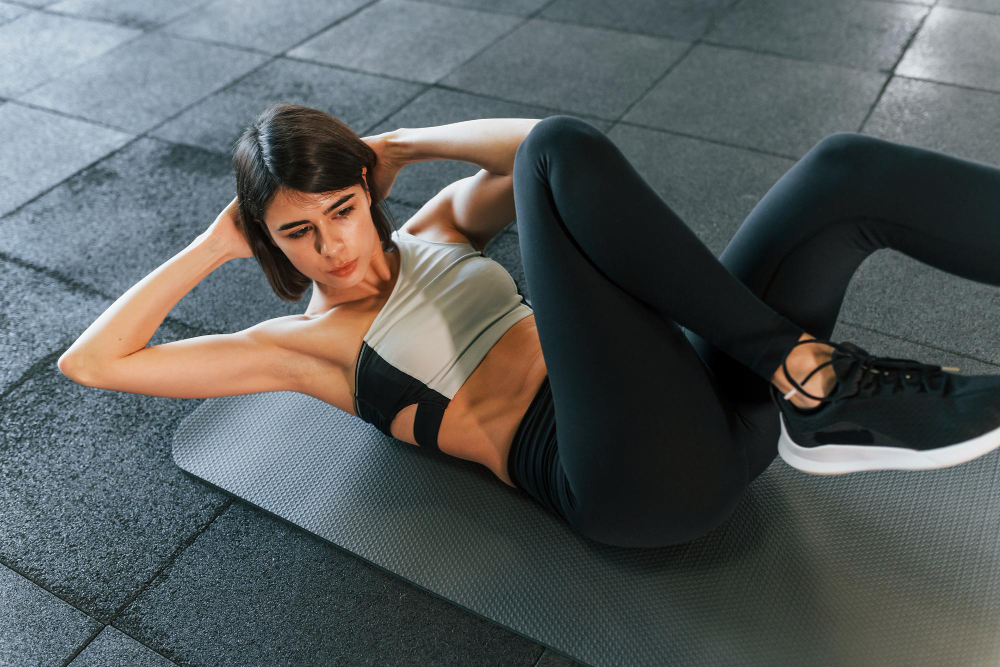The Science of Selecting the Perfect Abdominal Exercise

In the chronicles of fitness folklore, the abdominal exercise has earned a place of reverence akin to the Holy Grail. Every training enthusiast has, at some point, quested for the perfect core workout that promises the structural integrity of a marble statue and the strength to topple Goliath. But with a plethora of planks, a battery of crunches, and a myriad of movements, how does one discern which exercise truly reigns supreme in the realm of the abs? Uncover the science behind selecting the abdominal exercise that’s right for you.
The Core as Your Lighthouse
Before scouring the horizon for the promised exercise, it's crucial to understand the role of the core in your body's biomechanics. Picture your core muscles as the lighthouse keeper—steadfast and unwavering, maintaining the body's upright position, and signaling safety through treacherous storms of movement.
The core is not just about sculpted six-pack definition that could grate cheese; its underlying purpose is foundational to every physical exertion, from picking up a pencil to executing a powerful deadlift. With that said, the science of the perfect core exercise must begin with a clear understanding of the muscles involved.
Anatomy Lesson: Core Muscles 101
Your core isn't just your rectus abdominis—the muscle that creates that coveted eight-pack illusion. It's a symphony of muscles including the transverse abdominis (your body's natural weightlifting belt), the internal and external obliques, the multifidus, and the erector spinae. Each muscle has a specialized function, intertwined harmonically to provide stability, rotation, and flexion of the spine.
The Diverse Dictionary of Core Exercises
Just as language possesses myriad words to articulate subtle differences in meaning, the fitness lexicon brims with exercises that challenge your core in various ways. We’ll dissect a few staples and their specific merits.
The Almighty Plank
Considered by many the quintessential core exercise, the plank elicits full-body tension, primarily engaging the transverse abdominis and the multifidus. It's a test of endurance, aiming to maintain a rigid 'plank' position for an extended time, building the resilience necessary to stabilize the spine under prolonged stress.
The Humble Crunch
In the kingdom of core exercises, the crunch may have relinquished its crown, but it remains an accessible and effective way to target the rectus abdominis. Lying on your back with knees bent, you perform a 'mini-sit-up,' focusing on the flexion of the spine's upper portion.
The Warrior Russian Twist
This exercise grows its own legion of devotees with its promise of oblique domination. Seated on the floor with knees bent, the torso twists from side to side, enhancing rotational control and strength in the core. It tilts the balance between the internal and external obliques, making it a potent weapon for waistline refinement.
Dynamic Core Exercises
Not all core exercises involve stoic stasis. Dynamic movements like the hanging leg raise test the core's ability to resist against momentum, forging both strength and coordination. By lifting legs from a hanging position, the exercise targets the lower abdominals and hip flexors with gusto.
Matching Core Exercises to Your Needs
Selecting the right core exercise is akin to fitting a bespoke suit; it should cater to your unique body and your fitness goals. A few guiding questions can steer you in the correct trajectory:
What's Your Core Objective?
Are you rehabilitating an injury, working towards a sculpted physique, or striving for functional strength? Your objective should inform your exercise selection. For instance, someone seeking postural correction might lean towards isometric exercises like the plank, while a bodybuilder gravitates towards movements that emphasize muscle contraction and definition.
Is Functional Fitness Your North Star?
For those navigating the seas of functional fitness, compound movements should be the constellations they steer by. Exercises like the deadlift or squat not only work the core but integrate it seamlessly into movement patterns that mirror real-life activities, from grocery bag hoisting to tennis serves.
Do You Have a Weak Link?
Sometimes, specific muscles within the core may need targeted attention. Weaknesses in the transverse abdominis, often overlooked but crucial for spinal stabilization, can be addressed with exercises that draw the belly button towards the spine without any visible change in the trunk position, such as the dead bug or bird dog.
Considering Accessibility and Safety
Lastly, the perfect core exercise must also be the one you can perform consistently and safely. An exercise that you despise will not find its way into your routine, and one that causes discomfort or, worse, pain, should be promptly retired.
A Personalized Core Curriculum
Finding the right abdominal exercise is akin to solving a puzzle with a multitude of correct pieces. It requires understanding your body, tuning into your goals, and selecting exercises that mold the core to serve you best.
If you're wading through the sea of crunches and planks and still haven't found the golden exercise, perhaps it's time to seek the bespoke advice of a professional. A physical therapist, like the seasoned navigators of fitness, can tailor a core curriculum that considers your unique body mechanics, history, and aspirations.
In the quest for the perfect abdominal exercise, remember that the core is more than a set of muscles; it's a compass that guides the ship of your body through life's dynamic oceans. Choose wisely, train diligently, and your core will not only be a source of strength but a beacon of health for years to come. If you're seeking for Physical therapy in Oviedo, FL, contact B Physical Therapy today to schedule an appointment.